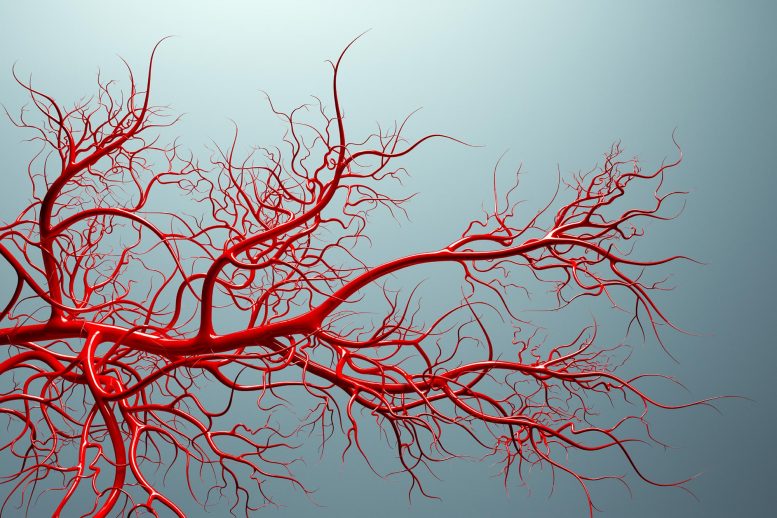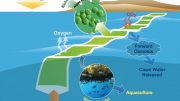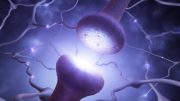
Abnormal blood vessel formations can cause cardiac problems, pain, and bleeding.
A new study finds that thalidomide can treat abnormal blood vessel formations.
The same properties of thalidomide, the prevention of blood vessel development (anti-angiogenesis), which resulted in birth defects when it was administered to pregnant women, have sparked interest in its therapeutic potential in other domains.
Professor Miikka Vikkula of the de Duve Institute, Université Catholique de Louvain, Brussels, Belgium, presented findings from a study on the use of thalidomide in patients with severe arteriovenous malformations (AVMs) on Sunday at the annual meeting of the European Society for Human Genetics. These findings, which were recently published in Nature Cardiovascular Research, demonstrate a significant decrease in symptoms and an increase in quality of life as a consequence.
AVMs are abnormal blood vessel tangles that link arteries and veins and change normal blood flow. They are excruciatingly painful, lead to bleeding, deformity of the afflicted body part, and heart issues. Usually congenital, they often only become apparent when a person develops and reaches adolescence or age. Surgery or embolization (the injection of a substance that locally damages blood vessels, causing scar tissue) are often used to treat severe instances, while these methods are seldom completely successful and can make things worse.
Some people with AVMs can live relatively normal lives, but even in less severe cases, there is always the risk that the abnormal tangles of blood vessels can burst and may cause a stroke when in the brain. About one in every hundred AVM patients suffers a stroke each year.
“Our group has been studying the causes of vascular abnormalities for 30 years,” says Professor Vikkula. “We have identified several genetic causes and have been able to show that certain mutations activate the signaling inside the blood vessel wall -cells and this promotes the abnormal formation of blood vessels (angiogenesis). This led us to wonder about the possibility of using thalidomide to inhibit abnormal blood vessel formation.”
After showing that a vascular malformation could be corrected in a mouse model, Professor Laurence Boon from the Centre for Vascular Anomalies at Saint Luc University Hospital, Brussels, who has been working in collaboration with Professor Vikkula for 30 years, recruited 18 patients with AVMs to a study of the use of thalidomide in their condition.
They were aged between 19 – 70 and all had severe malformations that could not be treated by conventional approaches. Patients had to agree to use contraception for at least four weeks before starting thalidomide and to continue for four weeks after the cessation of treatment. Since thalidomide is present in semen, men also had to agree to use condoms during sex.
Patients received either 50mg, 100mg, or 200mg of thalidomide per day for between two and 52 months. Eight AVMs were stable after a mean thalidomide cessation of 54 months, and four recurred after a mean duration of 11.5 months. Combined treatment with embolization, where arteries or veins within the AVM are blocked by an agent that destroys vascular wall cells, allowed the thalidomide dose to be reduced to 50mg per day in five patients.
Reducing the dose where possible was important, says Professor Vikkula because a higher dose was associated with side effects, particularly tiredness and peripheral neuropathy, damage to the nerves located outside the brain and spinal cord that causes weakness and numbness, particularly in the hands and feet.
“All the patients experienced a rapid reduction of pain, together with the cessation of bleeding and the healing of ulcers where these were present,” says Professor Vikkula. “The three patients with cardiac failure also saw their problems resolved, and one AVM appeared to be completely cured after 19 months of thalidomide and an eight-year follow-up.
“We know that thalidomide acts through vascular endothelial growth factor (VEGF) a signaling protein that promotes the growth of new blood vessels. VEGF levels are high in vascular abnormalities such as AVMs and are therefore likely that thalidomide reduces signaling via the angiogenesis-promoting pathways. Although our study is only small, the results are convincing, and we hope that they will be confirmed by larger trials.”
A further advantage of the use of thalidomide in the treatment of AVMs is cost. Two other drugs, recently developed for use in oncology and being tested to treat AVMs, cost up to twelve times as much, and also have numerous side effects.
“We had hypothesized that thalidomide should work in these patients, so our results did not come as a surprise, but it was great to have clinical confirmation that we were right,” Professor Vikkula concludes. “In our view, this is a breakthrough finding and provides a solid basis for the development of molecular treatments for AVMs.”
Professor Alexandre Reymond, chair of the conference, said: “This study shows not only the healthcare and economic benefits of repurposing drugs – even the most maligned – but also how genetic research can lead to real breakthroughs in therapies for difficult to treat, distressing conditions.”
Reference: “Case report study of thalidomide therapy in 18 patients with severe arteriovenous malformations” by Laurence M. Boon, Valérie Dekeuleneer, Julien Coulie, Liliane Marot, Anne-Christine Bataille, Frank Hammer, Philippe Clapuyt, Anne Jeanjean, Anne Dompmartin, and Miikka Vikkula, 10 June 2022, Nature Cardiovascular Research.
DOI: 10.1038/s44161-022-00080-2









Be the first to comment on "Cheaper and Safer: A New Effective Treatment for Abnormal Blood Vessel Formations"